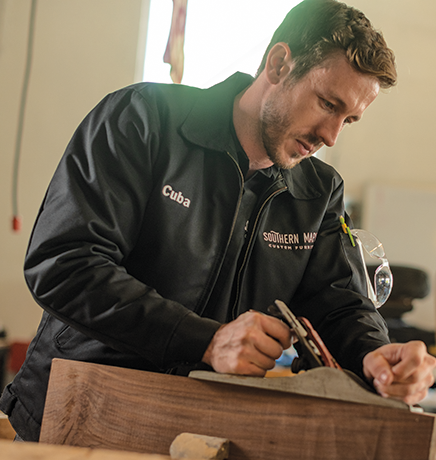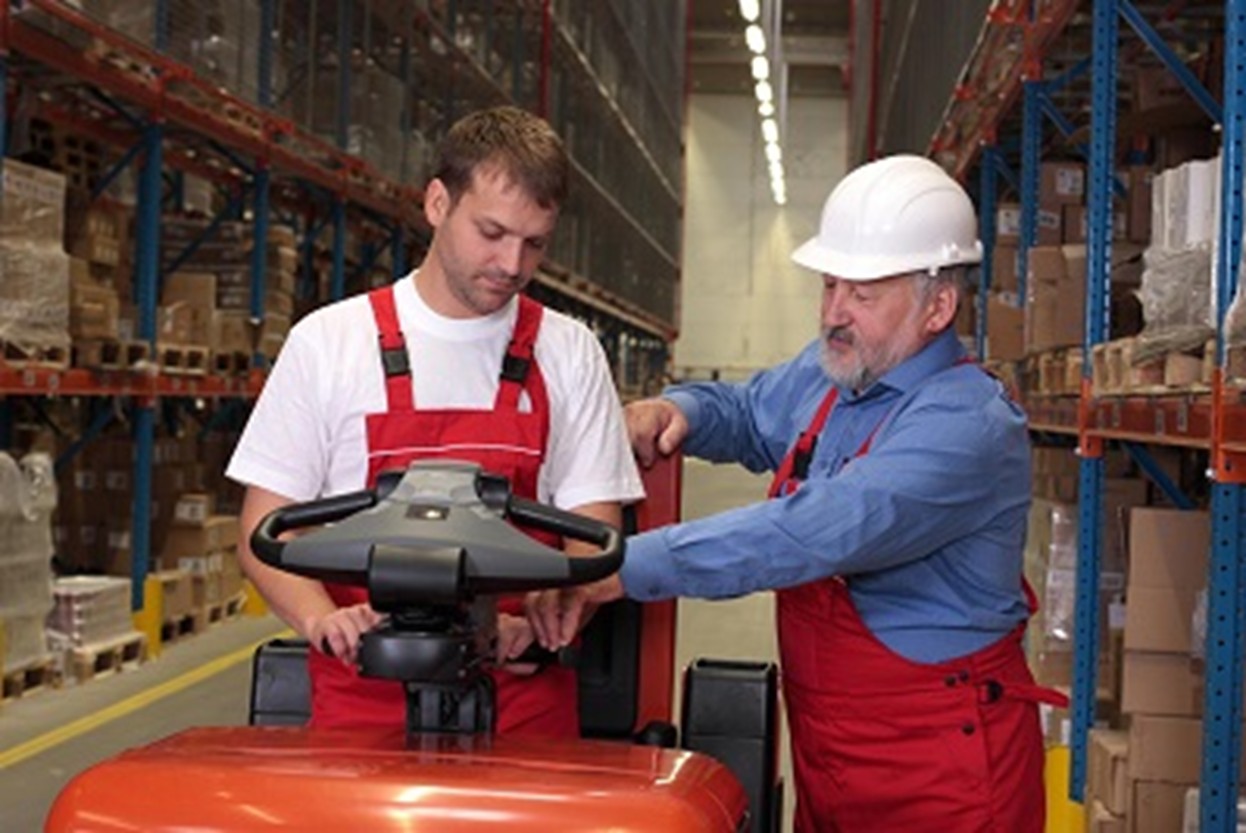Ensuring a safe, compliant warehouse environment is a top priority for businesses operating in manufacturing, distribution, and logistics. The Occupational Safety and Health Administration (OSHA) sets strict regulations to protect workers from hazards, including exposure to chemicals, heavy machinery, and slip-and-fall risks.
Non-compliance can result in costly fines and operational disruptions—that’s why it is essential for companies in this field to stay up to date with OSHA guidelines.
OSHA regulations apply to a wide range of industries, including warehousing, construction, automotive, and food processing—basically any workplace where employee safety is a concern. These regulations cover everything from fire safety and personal protective equipment (PPE) to proper signage and employee training programs.
One key aspect of compliance is ensuring that workers wear proper protective workwear, such as high-visibility apparel, flame-resistant (FR) uniforms, and slip-resistant footwear in appropriate areas of the facility.
Below, we’ll explore the importance of OSHA compliance, some warehouse safety tips, and how Prudential’s uniform solutions can help businesses meet regulatory requirements while protecting their workforce.
The OSHA Compliance Checklist: A Crash Course in Warehouse Safety Compliance
All employers, no matter the size of their business, have a duty to maintain safe working conditions and a safe environment for each and every one of their employees. In order to ensure employers are held to these standards, there are specific OSHA requirements that must be obeyed. What follows is a basic step-by-step process for ensuring compliance.
1. Assemble Your Checklist

To help get you started on verifying whether your business promotes safe practices and a safe environment, you need to put together a comprehensive checklist of workplace areas and processes subject to OSHA rules. Here are some items to include on your OSHA compliance checklist:
- Hazard Communications
- Emergency Action Plan
- Fire Safety
- Emergency Exits/Exit Routes
- Working/Walking Surfaces
- Medical and First Aid
- Machine Guarding
- Lockout/Tagout
- Electrical Hazards
- PPE (Personal Protective Equipment)
- Work, Health, and Working Uniforms
- Respiratory Protection
- Hearing Protection
- Confined Spaces
- Blood/Bodily Fluids
- Powered Industrial Trucks/Forklifts
Please keep in mind that this is not a complete list but a general starting point. OSHA requirements can and do vary based on the type of business, its industry, and its market segment. It is the responsibility of business owners to review all current OSHA requirements to verify their businesses are compliant.
2. Next, a Survey and Audit
Once you have your checklist and have verified you have covered all of the necessary OSHA requirements for your business, you will want to do a survey and audit of your work environment and business. The purpose of the survey and audit is to identify any additional potential workplace hazards you may have overlooked.
For instance, what sort of training do you provide your warehouse employees before allowing them to operate a piece of equipment or machinery? You may have overlooked important training practices, some of which could be required by OSHA.
3. Then a Detailed Job Safety and Health Program
The next step to ensuring OSHA compliance is to develop a detailed job safety and health program. This program should include different types of job training, from on-the-job and instructional-based training to self-paced learning modules.
Proper training can help reduce the risks of accidents as well as improve OSHA compliance in the workplace. Part of the training should include detailed steps to follow should an employee encounter a potentially hazardous situation, like discovering a piece of equipment is malfunctioning.
Display Posters
In addition, you need to have OSHA posters prominently displayed where employees can view them easily. These posters inform employees about job safety and health. If you have employees who speak a different language, it is highly recommended to obtain posters in different languages and display them together in the same locations in your workplace.
4. Keep Records
You may also be required to keep accurate records of any injuries and illnesses that occur in the workplace. In any event, ongoing record-keeping is a good habit to develop since your records can help identify potential workplace hazards or other issues that need to be addressed.
5. Report Injuries
Furthermore, OSHA requires employers to report any injuries and deaths that occur in the workplace. To help you ensure OSHA compliance, they offer an easy-to-use compliance assistance quick-start guide for various industries.
Prudential Overall Supply: Your One-Stop Uniform Shop
Work uniforms play an important role in ensuring OSHA compliance by providing employees with the protective gear necessary to minimize workplace hazards. OSHA regulations require appropriate PPE and related safety apparel in industries where workers face risks such as fire hazards, chemical exposure, low visibility, and slip-and-fall accidents.
By investing in professionally maintained, OSHA-compliant uniforms, warehouse managers can ensure that their teams remain properly protected.
For warehouse managers looking for reliable uniforms and PPE, Prudential Overall Supply offers the ideal solutions. We provide an array of high-quality protective workwear, including high-visibility apparel, flame-resistant (FR) uniforms, industrial coveralls, and slip-resistant garments, ensuring that your warehouse employees are properly equipped to meet workplace safety regulations.
Our uniforms not only help companies maintain OSHA compliance but also improve employee comfort and productivity.
The Benefits of Multiple Options in Warehouse Uniforms

Ideally, warehouses should make available a variety of uniforms to accommodate the different roles and safety needs of employees. A one-size-fits-all approach just doesn’t work in environments where some employees handle heavy machinery, others work in shipping and logistics, and supervisors oversee operations on the warehouse floor.
By providing multiple uniform options tailored to specific job functions, warehouse managers can enhance safety and efficiency, as well as compliance with OSHA regulations.
- Material Handlers and Forklift Operators – These warehouse employees regularly lift heavy items and operate equipment, making durable, breathable uniforms essential. High-visibility vests, reinforced work shirts, and heavy-duty work pants help keep them safe and comfortable throughout their shifts.
- Warehouse Supervisors and Management – Supervisors need professional yet functional attire that allows them to move between the warehouse floor and office settings. They may wear polo shirts or branded work button-downs, often paired with high-visibility safety vests to ensure they are easily identifiable on the warehouse floor.
- Maintenance and Repair Technicians – Employees tasked with facility upkeep, equipment repair, and general maintenance require protective uniforms such as flame-resistant (FR) coveralls, slip-resistant footwear, and utility work shirts. These garments shield them from potential hazards such as electrical risks and chemical spills while working in a warehouse.
- Shipping and Receiving Personnel – Working in loading docks and shipping areas means exposure to excessively hot or cold temperatures and moving machinery. These employees benefit from layered uniform options, including weather-resistant outerwear, insulated vests, and durable work pants to accommodate indoor and outdoor conditions.
- Sanitation and Janitorial Teams – Keeping a warehouse clean requires industrial-grade cleaning uniforms, such as moisture-resistant coveralls, disposable gloves, and non-slip footwear to ensure hygiene and safety in high-traffic areas.
Multiple uniforms for different roles within a business can be designed to reflect the company’s preferred branding. This can be achieved by incorporating consistent elements such as company colors, logos, and overall design themes.
For instance, even if managers wear formal attire and repair technicians wear practical uniforms, both can feature the same color palette or logos to create a consistent look.
All this explains why it is important to select a uniform supplier with a wide range of different work apparel options. Prudential Overall Supply fits the bill—we offer a variety of work clothes, across various industries.
Prudential takes pride in offering a quality product at reasonable prices to local businesses. With plenty of options available, warehouses can enjoy all the benefits of high-quality, OSHA-compliant uniforms in the workplace.
Uniform Suppliers: Choosing a Company to Help Yours Grow
Uniforms can provide a lot of personal benefits to your business and employees. As a business owner or manager, it can seem like an insurmountable task to decide what companies you should be doing business with. Ultimately your suppliers influence the quality of the products that you put out, and the ability of your employees to do their job.
If you choose a distributor or supplier that is unreliable, it can be next to impossible to run a professional organization properly. The same holds true for your workplace uniforms. When it comes to business supplies and working apparel, Prudential Overall Supply is the standard. We’ve been in the business of helping businesses for over 90 years.
We offer a variety of workplace uniforms, including coveralls, work pants, work shirts, as well as specialized work clothes for men and women. We also provide security uniforms and even protective clothing.
Prudential’s Work Uniform Rental Services

With Prudential, businesses can choose from a variety of color schemes, styles, and fabrics to reflect their brand’s look and feel. On top of that, our uniforms can be customized with company logos, employee names, and other details that enhance professional appearance.
This ensures that no matter what type of uniform(s) you use at your site, each piece of apparel represents the company’s branding while meeting the functional requirements of its role.
Prudential’s rental uniform service offers businesses a convenient and cost-effective solution for maintaining a professional appearance. With our uniforms, companies can ensure their employees always have clean, well-fitting workwear, without the hassle of managing inventory or laundering.
Unlike many uniform rental companies, Prudential provides flexible rental plans (including a no-laundry leasing option), high-quality garments, and reliable service, to help businesses project a polished image while staying focused on their core operations. This service is ideal for businesses of all sizes that want to ensure consistency and professionalism in the workplace.
Prudential doesn’t just provide all these uniforms, we can also help to repair them. As many types of work apparel are designed to protect employees against various physical hazards, it’s not uncommon for work uniforms to become damaged.
Prudential works to repair uniforms as they come into our facility to be laundered. When they do come in with damage, the Prudential team cleans and repairs these work uniforms and then returns them to their respective businesses, ready for use.
Trust Prudential for Warehouse Uniforms
With Prudential in your corner, your warehouse can reap the many benefits of employee uniforms that have been carefully designed for the task, and backed by world-class laundry and repair services. For additional information about our work uniform rentals, including protective products, please feel free to contact Prudential Overall Supply at (800) 767-5536 today!
